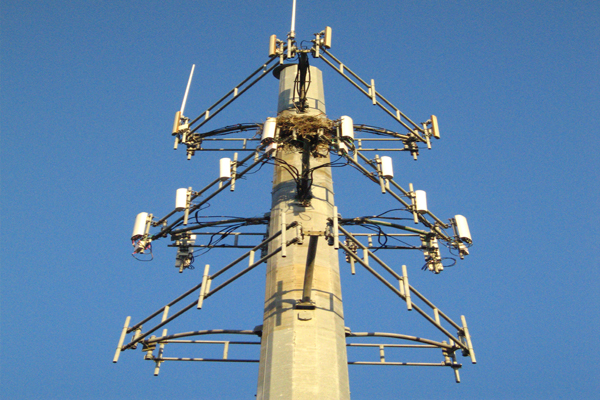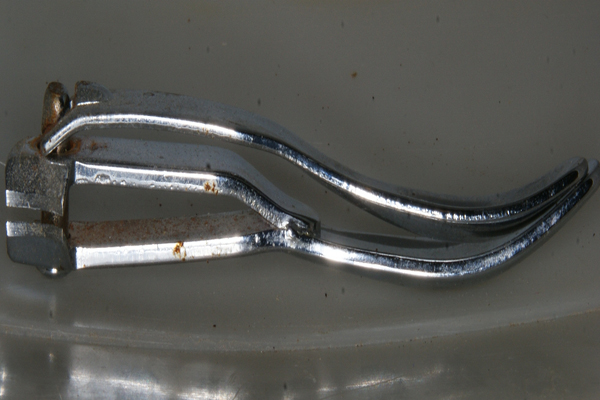Chemical Analysis
Energy Dispersive X-Ray (EDS) is a process that demonstrates what elements or characteristics are contained on a sample, e.g. containments, corrosion, and coating makeup. EDS is a useful, non-destructive test, in that the examination requires little sample preparation and can be performed on microscopic sized particles.
Optical Emission (OES) testing identifies the elements in your bulk metal sample. This process is fast and accurate. Moreover, knowing what your metal contains will help you understand how you can use it and prevent failures or mishaps.
Wavelength Dispersive X-Ray is a quick and accurate analysis that determines which elements are present in a small sample. This is good for understanding what is present in your metal samples, and can even be applied to food products where contamination is a concern.
X-Ray Diffraction (XRD) is a method that can show you the atomic structure of a sample that has crystal like characteristics. Having this insight allows you to see differences between samples that are not necessarily visible using other testing techniques, which is useful when examining vitamins, drugs and proteins.
X-Ray Fluorescence (XRF) testing provides timely and accurate identification of a sample, based on data collected from the surface of the sample. XRF can be preferable since the testing can be completed at your location.
Combustion testing is a technique that can be used to rate the carbon content of steel. Understanding the composition of your steel allows you to know if the steel will be suitable for your needs.
Non-Destructive Testing
Dye Penetrant (PT) testing examines a solid material (metal, plastics, and ceramics) where cracks, breaks, and hairline fractures can give way to leaks.
Guided Wave Ultrasound (GWUT) – GWUT is a technique that uses ultrasonic sound waves for examining pipelines, generally in the oil and gas industry. This technique is beneficial in that it can help to identify potential issues like corrosion in the pipeline, which left unaddressed, can fail.
Magnetic Particle (MT) inspection detects cracks in materials that consist of iron, nickel, cobalt, and, in some cases, alloys. The procedure takes advantage of magnetic fields placed in the material that can be used to find disruptions or breaks in the magnetic poles, which would indicate a defect.
Portable Hardness testing offers great flexibility in that the testing can be done where the structure or installation is located, using a variety of instruments. The test is useful in that it can register whether or not high heat temperatures has compromised the hardness of the structure or installation, that would typically be associated with fire.
Strain Gauge testing process adheres a foil to the structure or material. As the structure or material is deformed, the foil provides measurements on the amount of strain the structure or material was able to withstand.
Ultrasonic Flaw (UT) is an inspection that utilizes sound waves to locate cracks or breaks in the structure, material, or installation. An advantage to using this inspection is that it can be conducted where the structure or material is located, rather than in a laboratory.
X-Ray Inspection (RT) is deployed for analyzing welds or searching for defects. Using radiation from the x-ray, defects, breaks, and cracks can be found in metals, polymers, and other composite materials.
Eddy Current (ET) inspection is used in finding cracks or breaks in materials or applications that can conduct electricity. This is a useful technique that is routinely used in the power generation and aerospace industries.
Visual Inspection (VT) is a low-cost method to examine structures or installations. An experienced technician conducts the inspection using his or her line of sight, within two feet of the inspection area. This inspection assesses quality, craftsmanship, and general suitability of the installation or structure.
Mechanical Testing
Tensile Testing measures how a material or sample responds when it is pulled and stretched in opposite directions. Measurements are recorded for both how the material or sample is changed, up to and beyond its breaking point. This testing technique can be applied to fasteners, wire, cable, tubes, pipes, plates, structural beams, or even bars.
Bend Testing procedures show how flexible a weld or coating system on a material is. This testing application can be used in many instances, for example cables, tubes, pipes, plates, structural beams, and bars, to see if they meet the requirements needed.
Drop Weight Tear Testing lets you determine under which conditions your material or application will rupture or propagate a crack. Techniques of this nature are particularly valuable to the oil and gas industry where pipeline ruptures are common.
Flexural Testing adds clarity for how structures similar to a beam would behave when placed under considerable weight or stress. Knowing how your application would react to stress, will help you know if it needs to be made stronger and give you the understanding for which situations would be the best uses.
Fracture Toughness Testing returns results for how much more an existing crack or bulge will expand when more stress or pressure is added. This type of testing is usually conducted in the laboratory using a sample of the material that has the crack or bulge.
Hardness Testing is one of the most common tests to ascertain how resistance your application or sample is to indentions and scratches. This testing procedure can accommodate testing in the laboratory or even at the location of the installation or structure.
Micro Hardness examinations can be applied to thin materials and coatings where verifying how resistant and durable they are to scratches or to indentions is needed. This examination is well suited for small samples.
Shear Testing demonstrates how a material or application responds to a force that causes it to tear similar to the way scissors cut paper. Testing techniques like this are good for validating how strong a bolt or screw will withstand the pressure placed on it before it breaks.
Metallurgical
Metallographic Exam involves using light waves on a small, usually polished, sample, in order to document the material in cross section, such as microstructures and grain size. Using this approach, technicians are able to identify the likely cause of a material or application failure.
Sample Preparation are the core steps before a testing procedure is started, to help ensure accurate results. Key steps that are common for sample preparation are: 1) sectioning or proper cutting of the sample, 2) mounting or placing the sample on a secure apparatus that allows for thorough examination, 3) grinding and polishing or cleaning the surface, and 4) etching or highlighting features in the sample.
Scanning Electron Microscopy Analysis (SEM) incorporates shooting a beam of electrons at the sample, which causes the atoms in the sample to react. The data from the reaction is recorded, which renders 5 to 300,000X magnification. This process is useful for identifying cracks and surface defects, as well as identifying chemicals and contaminants.
Stereo Microscopy is a technique for examining a sample where only magnification up to 80X is needed. This technique can be used in conjunction with Scanning Electron Microscopy as a first step to gaining insight into possible cracks or identification of chemicals and contaminants.
Macroscopic Exam (VT) is a process mainly used in the assessment of the quality of welds. At normally less than 20-times magnification, macroscopic exams check weld permeability, welds that do not start at the root of the weld groove, weld beads that do not stick to the base metal, and incomplete welds.
Corrosion
Copper Accelerated Acetic Acid (CASS) is a testing procedure for speeding up the corrosion process to see how material will respond. The procedure requires introducing acetic acid to the traditional salt spray test, to procedure enhanced corrosive characteristics. This testing is beneficial in analyzing how resistant coatings are to corrosion.
Immersion Corrosion examination exposes how material behaves when it is submerged in a corrosive, water-filled environment. Oxygen and temperature can be altered to further gain insight into how the material or the coating reacts.
Salt Fog testing increases the rate of corrosion, illustrating how a component will function once exposed to the environment. This examination method is applicable to components and materials with or without a coating.
Cathodic Protection is a process for protecting your application or structure from corroding. Through connecting a battery to your structure or component, and either introducing another metal that will corrode instead of your structure or component or sending a current through your structure or application, corrosion is essentially stopped.
Surface Analysis
Fourier Transform Infrared Spectroscopy (FTIR) uses infrared light on a sample, producing a visual spectrum that can be used to identify the sample's make up. Applications for this test includes identification of paints, coatings, residues, and contaminants.
Scanning Electron (SEM) is an examination that is able to magnify the surface of the sample up to 300,000X, highlighting flaws, cracks, and including containments. Also, combining this process with Energy-Dispersive X-Ray Spectroscopy (EDS) offers quick classification of chemical compositions.
Weld Inspection
Welder Qualification (WPQ) gives assurance that your welds are being performed safely and to specification. The qualification involves examining weld quality, assessing processes, and performing mechanical tests on welds. These steps will show whether the welder has the prerequisite skills and knowledge to perform the necessary welds.
Procedure Qualification (WPS) assesses that a welder or manufacturer has completed the necessary welds to specification, following the detailed written instructions. This process helps to ensure weld quality and that the steps outlined are repeatable.
Failure Analysis
A Root Cause Analysis starts with a straight-forward visual assessment and photo documentation, then is followed with investigations for micro factures, metallographic inspection for material defects, a check of mechanical properties, check of chemical composition, as well as signs of corrosion damage. The findings from the inspection are summarized in a thorough and complete engineering report.
Laboratory Inspection is a service that makes available the use of a third-party laboratory for you to complete needed tests. This service is designed to save you time and costs associated with maintaining a laboratory, as well as the need to employ full-time skilled technicians. Laboratory inspection generally includes being able to work alongside, hand-in-hand, with the third-party laboratory for added expertise.
Learn more about our Testing Services.














